The linkages synthesized by Maoist groups with militant organisations, North East insurgents and radical Islamic organisations particularly for availing terror logistics continues to be a key concern for the internal security of India. At the same time, a plethora of factors and reasons imply the role of China in lugging iron to Left Wing Extremism (LWE) in India.
The Home Secretary, G.K. Pillai in November 2009 said that he was confident about the supply of arms from China to the Maoists in India - “Chinese are big smugglers and suppliers of small arms. I am sure that the Maoists also get them.”1The Home Minister P Chidambaram agrees with the notion that the Naxalites get weapons from outside India through the borders of Nepal, Myanmar and Bangladesh, but also maintains that he is unsure of any direct help the Naxalites get from the Chinese state actors.2 However, the repeated recoveries of Chinese made arms, radio sets etc from the Naxals is a substantial exposition of Maoist-China linkages.3
On a broader sense, the CPI (Maoist) is considered to be part of the international ultra-left brethren. It is a member of the Coordination Committee of Maoists Parties and Organisations of South Asia (CCOMPOSA), which is believed to have the direct blessings of Communist Party of China (CPC).4 Provided the CPC doesnot officially clarify its position on Naxalism and CPI (Maoist), the call into question is whether China aids India’s largest internal security threat.
The origin of the red terror dates back to the 1960s and much of it can be attributed to the global politics of the time period. Chinese Communism was struggling to grab its niche in the socialist world by engaging itself in an open combat with its Russian counterparts who advocated a revisionist theory of Parliamentary approach, instead of a bloody militant option to capture the power of a nation. The Soviet approach was embraced by the Indian Communist groups including the CPI and CPI (Marxist). The origin of the new movement called Naxalism, which believed in capturing power ‘through the barrel of the gun’, became dear to the Chinese Communist Party in no time. When the first outburst of the militant movement occurred in 1967 in Naxalbari, the mouthpiece of the Chinese Communist Party gratified it by saying that ‘a peal of spring thunder has fallen over India’5The CPC which supported many movements in overthrowing governments including the Ne Win regime of Burma, Sukarno in Indonesia etc, vowed their open support for overthrowing the Indian government repeatedly through their official mouth pieces – the People’s Daily and the Radio Peking. The Chinese official radio called for a ‘relentless armed struggle’ to overthrow the Indian government on June 10, 1967 soon after the ‘spring thunder struck the Indian land.’6The relation between the Chinese Communists and the Indian Maoists strained in the later years owing to various reasons including ideological differences. However, it is difficult to think that the Chinese will afford isolating from its bandwagon such a powerful militant movement which could change the political dimensions of South Asia in the way they want.
Any effort to discover the depth of their kinship is nearly an impossible task owing to the opaqueness of Chinese bureaucracy and party machinery. It is a widely agreed notion that China promotes anti-democratic movements in South Asia and South East Asia. There is little reason to believe that the Chinese have utmost no role in the Indian left wing insurgency. The Chinese expert Subrahmaniam Swamy says that the Naxals are one of the proxies the Chinese use in India to take care of their anti-Indian agenda.7 The dimensions of the accord between the Chinese Communists and Indian Maoists may not be restricted to waging a proxy war against the state of India, but also in structuring an axis of red power stretching from the extreme tip of South Asia to the northern tip of China.
D S Rajan of the Chennai Centre for Chinese Studies observes, “Will the CCP follow the Nepal model to establish relationship with the CPI (Maoists) at an opportune time? While nothing definite can be said on this account, the Chinese appear to be receptive to the idea of Indian Maoists choosing a parliamentary path to come to power as their Nepalese counter-parts did; indicators to this effect have been some authoritative comments from scholars in China (Professor Shi Hongyuan of the Chinese Academy of Social Sciences, ‘Contemporary World Socialism Issues’, No.1/2009 issue). By implication, they seem to mean that China of today does not expect the Indian Maoists to capture power through armed revolution. On its part, the CPI (Maoists) may not be willing to give up the path of armed struggle, at least at this stage. In such conditions, the CCP may only like to keep a ‘wait and watch’ stand vis-à-vis Indian Maoists in the near future.”8
This point of view is shared by many other experts. R S N Singh observes, “During the monarchy, when the Maoist insurgency in Nepal was at its peak, China kept denouncing the Maoists, and maintained that the Maoists were misusing the name of Mao, but once the Maoists formed the government, the links were exposed. Against the established practice, when Prachanda became PM, the first country he visited was China.'”9Gen. Shankar Roy Chowdhury, the former Chief of Army Staff says that Nepal Maoist party has become the proxy for China and there are possibilities of Indian Maoists becoming the proxy for external forces. “Left Wing Extremism offers the most attractive high-value low-cost strategic option for external exploitation. Rest assured: Pakistan, Bangladesh, and perhaps even ‘Maobadi Nepal’ — as a proxy for the People’s Republic of China — are eyeing it very closely indeed.”10
Mohan Ram in his book ‘Maoism in India’ writes, “It was perhaps the CPC’s hope that, ultimately, the Maoist stream of the Indian Communist movement would prove stronger than the non-Maoist and all it wanted was to catalyse the procces.”
The CCOMPOSA was formed to bring all the Maoist movements in South Asia under one roof and the CPN (Maoist) plays an important role in it. The Fourth Congress of the CCOMPOSA was held in Kathmandu in August 2006. The resolution passed by the Congress says: “The CCOMPOSA would deepen and advance the new democratic revolutions in different countries of South Asia turning into a flaming field of people’s revolutionary urges and burn to ashes imperialism (particularly US imperialism), Indian expansionism and all reaction in the region.”11 The significant role played by Nepal in CCOMPOSA and a powerful pro-China lobby of the UCPN (Maoist) helps the CPC to use Nepal as its proxy to facilitate revolution in India and other parts of the subcontinent. In the current geo-strategic scenario, these apprehensions need to be taken seriously to prevent a strategic crisis which India may face due to a three front security threat – from Pakistan, China and internal.
The Maoist document ‘Strategy & tactics of Indian Revolution’ instructs, “In order to properly conduct the revolution towards victory, the Communist Party in every country must, without fail, utilise every smallest opportunity to gain a friend from among the people, however vacillating that friend may be, however unable he may be, however unreliable he may be and even however temporary that opportunity may be”. These assertions imply the linkages the Maoists have developed with the North-east insurgent groups, which in turn connect them to China for arms, logistics and training. It has to be remembered that the same party which rules one of the most powerful economies of the world is also notorious for supporting umpteen numbers of bloody movements in the South Asian region including those of Myanmar, Indonesia etc.
During his interrogation in 2010, the CPI(Maoist) Bengal secretary Sudip Chongdar alias Kanchan revealed that the Maoists have been receiving weapons from China through international smuggling routes, facilitated especially by the North-Eastern groups like NSCN (IM). In fact the arrest of Kanchan was the fallout of the arrests of Anthony Shimray, a senior leader of NSCN (IM) and Rajkumar Meghen, Chairman of United National Liberation Front of Manipur. Kanchan as well as many other senior Maoist leaders including Central Committee member Kishenji were in touch with the North-East insurgent leaders. A large haul of weapons and communication devices which are believed to be part of a Rs. 4.5 crore consignment Shimray bought from China was also seized during the arrest of Kanchan and other Maoist leaders. Kanchan also revealed that some senior Maoist leaders, including a Central Committee member have visited China.12
Continuous seizures of Chinese made arms from the Maoists throughout the country shed light on the sizeable import of weapons from China to India. A report of 2009 says that out of the total weapons seized in India from Naxals and insurgents, around 200 are Chinese made small arms. At many instances, the forces could recover Chinese grenades and other arms from West Bengal, Jharkhand etc. The General Secretary of CPI (Maoist) Muppala Lakshman Rao alias Ganapathy in an interview in November 2010 have admitted that they purchase weapons from abroad.13
Meanwhile, the occasional statements from Chinese government pledging support to India in containing all terror activities in its land creates a lot of confusion among India’s China observers as well as the diplomatic and strategic community. The statement by the Chinese Ambassador to India, Zhang Yan stating that they will extend support to India to combat terrorism - whether it is Taliban or any ‘other’, was among the like.14 Experts point out that the Chinese government has not denied any allegation regarding linkages with Naxals. Also, it continues to protect voices in China who openly supports the Naxal cause. China expert D.S. Rajan refers to websites like www.maoflag.net, www.gjgy.org etc which openly endorses the Maoist violence including the ambush of April 6, 2010 in which 76 security forces were killed. He asks, “Why the authorities in China seem to be closing their eyes when some of the country's websites, no doubt unofficial, but still controllable by the government, tend to sympathise with the cause being promoted by a banned Maoist party in India? Is it a sign that Beijing can review its policy towards the Indian Maoists when the time comes?”15 In this backdrop, the statements of Chinese officials supporting the Indian efforts to curb insurgencies should be considered nothing more than diplomatic rhetoric.
The positions taken by the CPI (Maoist) regarding China adds to the above described fuss. The Maoist leaders have continuously expressed their disaffection and ideological differences with the post Mao communist rule of China. “Our position is diametrically opposite to China”, said Kishenji responding to a question on their relation with the CPC.16In a paper presented at the International Meeting of Maoist Parties & Organisations in December 2006, CPI (Maoist) explains this ideological asymmetry - “First the Soviet Union turned revisionist and with them scores of parties followed suit. Then at least China and the GPCR stood out as a shining star, inspiring all around the globe. But this too changed its colours after the death of Mao in 1976.”17 The CPI (Maoist) may continue to be vocal on its disagreement with a revisionist CPC, but as it is inferred above by experts, the Maoists as well as the CPC may prove their skills of dialectical opportunism at any instance to forge links with each other.
It may be true that the policies of the CPC towards India and the Maoist movement in India have changed since the 1970s. But does it mean that China will reverse itself from its ulterior objective of a greater Maoist world comprising primarily of South Asia? The current situation creates diplomatic fracas among Indian diplomatic and strategic community who attempt to find answers for many questions pertaining to Maoists and China. As mentioned earlier, the task of fathoming the depths of this intrinsic cross border communion of red terror is labyrinthine. But one may agree to Rajan who responds to a comment by China Institute for International Strategic Studies, a Chinese think tank, that ‘a little action by Chinese can break India into pieces’ by saying “panic towards such outbursts will be a mistake, but ignoring them will prove to be costly for India.”18 Maoists, undoubtedly, would be significant partners to any external force working on such a balkanization plan.
References:
1.Meetu Jain, “Maoists helped by Chinese arms smugglers: Centre”, CNN-IBN, November 9, 2009, accessed at http://ibnlive.in.com/news/maoists-helped-by-chinese-arms-smugglers-centre/104824-3.html on March 25, 2011
2.“Maoists getting arms from Bangladesh, Myanmar: Chidambaram”, Times of India, October 24, 2009, accessed at http://articles.timesofindia.indiatimes.com/2009-10-24/india/28112935_1_indo-nepal-border-maoist-leader-porous-border on March 25, 2011
3.“Security forces recover Chinese arms from Naxals, militants”, DNA, November 16,2009, accessed at http://www.dnaindia.com/india/report_security-forces-recover-chinese-arms-from-naxals-militants_1312443, on March 25, 2011
4.P.V.Ramana, “Linkages between Indian and Nepalese Maoists”, IDSA comments, November 9,2010 accessed at http://www.idsa.in/idsacomments/LinkagesbetweenIndianandNepaleseMaoists_pvramana_091110, on March 25, 2011
5.Editorial, People’s Daily (organ of the Central Committee of the Communist Party of China), July 5, 1967. Translated and reproduced as “Spring Thunder Over India”, Liberation, Vol. I, No. 1, November 1967
6.Mohan Ram, Maoism in India (Delhi: Vikas Publications, 1971), p. 57
7.Subrahmaniam Swamy, “China: Dimensions of Threats to India”, Talk at Vivekananda International Foundation, January 29, 2010.
8.D.S.Rajan, “Is China Sympathetic to the Communist Party of India (Maoists)?”, C3S Paper No.473, April 11, 2010 accessed at http://www.southasiaanalysis.org/%5Cpapers38%5Cpaper3757.html on March 25, 2011
9.R.S.N. Singh, “Maoists : China's Proxy Soldiers”, Indian Defence Review, Vol 25, No.3, July-September 2010 accessed at http://www.indiandefencereview.com/IDR-Updates/Maoists--Chinas--Proxy-Soldiers.html on March 25, 2010
10.Gen Shankar Roy Chowdhury (Retd), “To combat Red Terror, Tackle its Root Causes”, The Asian Age, April 21, 2009
11.K. Srinivas Reddy, “Maoists to improve coordination”, The Hindu, September 29, 2006 accessed at http://www.hindu.com/2006/09/29/stories/2006092902641400.htm on March 25, 2011
12.Madhuparna Das, “Arrested Maoists reveal a supply chain from China”, Indian Express, December 8, 2010 accessed at http://www.indianexpress.com/news/arrested-maoists-reveal-a-supply-chain-from-china/721757/2 on March 25, 2011
13.Ganapathy, “Nobody can kill the ideas of ‘Azad’! Nobody can stop the advancement of the revolution!!”, interview in November 2010 accessed at http://southasiarev.files.wordpress.com/2010/11/gp-interview_english_full_final.pdf on March 25, 2011
14.“China will support any terror victim country, says Zhang Yan”,ANI, March 5, 2009 accessed at http://www.thaindian.com/newsportal/india-news/china-will-support-any-terror-victim-country-says-zhang-yan_100163139.html on March 25, 2011
15.D.S.Rajan, “Is China Sympathetic to the Communist Party of India (Maoists)?”, C3S Paper, No.473, April 11, 2010 accessed at http://www.southasiaanalysis.org/%5Cpapers38%5Cpaper3757.html on March 25, 2011
16.“I Am The Real Desh Bhakt”, Interview given by Kishenji, Tehelka, November 13, 2009 accessed at http://www.tehelka.com/story_main43.asp?filename=Ne211109i_am.asp on March 25, 2011
17.“Paper Presented by the Communist Party of India (Maoist) on the Occasion of the International Meeting of Maoist Parties & Organisations held from December 26, 2006”, The Worker, Volume 11, July 2007, pp. 39-47
18.D.S.Rajan, “China Should break up the Indian Union, suggests a Chinese Strategist”, C3S Paper, No.325 August 9, 2009 accessed at http://www.c3sindia.org/india/719 on March 25, 2011
--------------------------------------
Published Date : 25 March, 2011

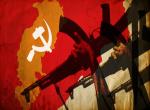
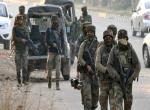
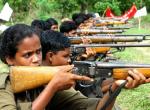
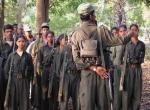

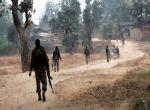
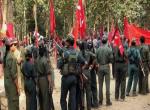

Post new comment